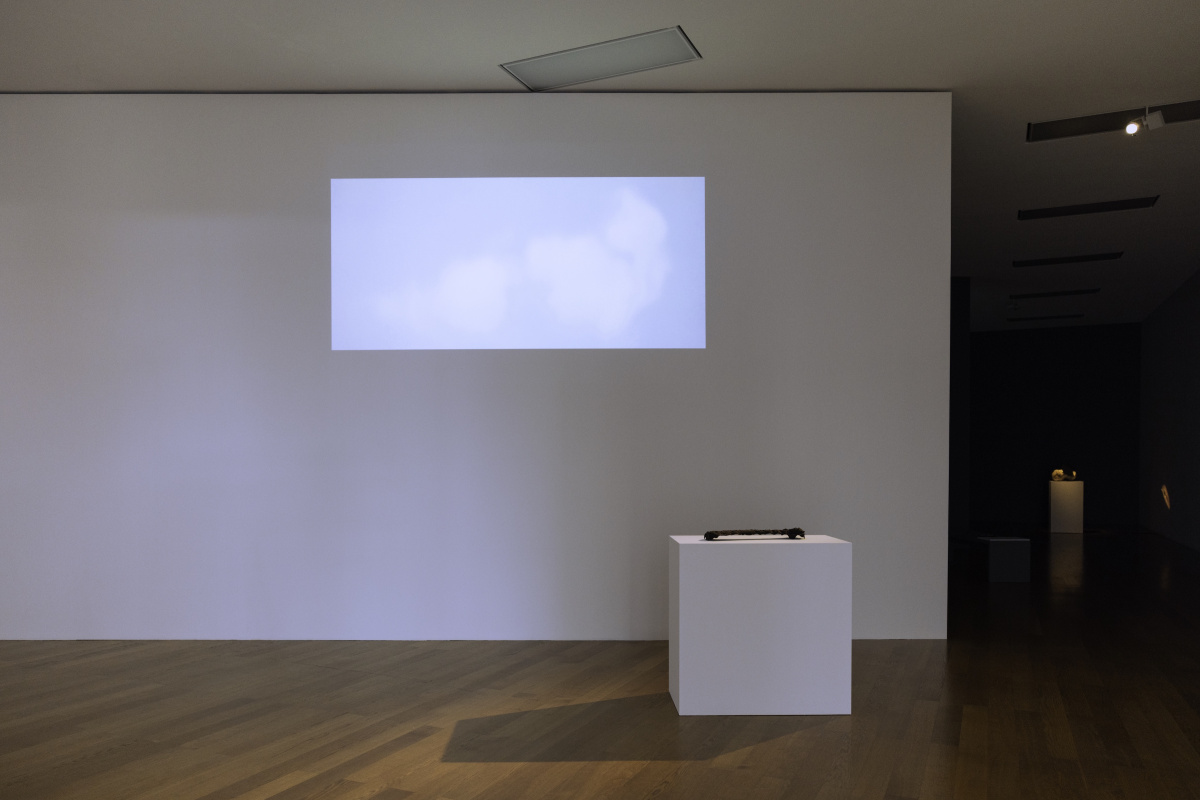3-D printed quartz sand, inorganic binder, video, colour, silent
5:30 min. (loop)
9 × 13 × 55 cm
Ed.: 1/3 + 3. A.P.
Kunstmuseum Liechtenstein, Vaduz
A Recovered Bone (2001: A Space Odyssey) takes an iconic prop from film history, the infamous bone from the opening sequence of Stanley Kubrick's 1968 film, from the heavens back to earth, from civilization's prehistory and post-history to the present, rematerializing the object as a sculpture in the exhibition space. In one way or another, all these works play with the line separating fiction and documentation. At the same time, they confront their respective subjects with operations that are understood as processes of recalculation between the two-dimensionality of the picture and three-dimensional spaces.
In Kubrick's film, the bone, tossed aloft by a primate after he used it as a fatal weapon against an enemy fellow primate, is a projectile. Perhaps the most famous match cut of film history bridges millennia; in the rotation of the flight, civilizational extremes fuse, a mythical 'before' and a speculative 'after'. In 1969, Annette Michelson wrote in an influential essay in Artforum: 'Kubrick's transformation of bone into spacecraft through the movement of redescent (through that single cut which concludes the Prologue and initiates the Odyssey) inscribes, within the most spectacular ellipsis in cinematic history, nothing less than the entire trajectory of human history, the birth and evolution of Intelligence'.
Wedemeyer rematerialized the bone by calculating its three-dimensional form from the filmed images. On the set of Kubrick's film, a banal prop became a mythically charged hub connecting worlds. Wedemeyer interprets the images from Kubrick's film as an aggregate of data that is then translated back to the real world with a 3-D printer. This work can be understood as 'reverse engineering', the conceptual reflection of the moment of production, where the traces and imprecision of the processes of recalculation remain visible as artefacts.
Volker Pantenburg
'The bone from 2001: A Space Odyssey is part of a cinema puzzle that I tried to solve sculpturally. In the film, the bone is tossed by early primates into the air, as if with this tool-as-weapon they had arrived at a new state of development. In the film, the bone is edited away and a spaceship appears: the fiction of progress or evolution. The bone should fall back to earth with gravity, but we no longer see it. The question is: where has it ended up?'
Clemens von Wedemeyer
Annette Michelson, 'Bodies in Space: Film as "Carnal Knowledge"', Artforum, (February 1969), https://www.artforum.com/print/196902/bodies-in-space-film-as-carnal-knowledge-36517.
A Brief Journey in Time. Clemens von Wedemeyer in Conversation with Marie-France Rafael, in: 'clemens von wedemeyer', Letizia Ragaglia, Christiane Meyer-Stoll, Kunstmuseum Liechtenstein, Vaduz (eds.), from the collection 11, Vaduz 2023, p. 27.
